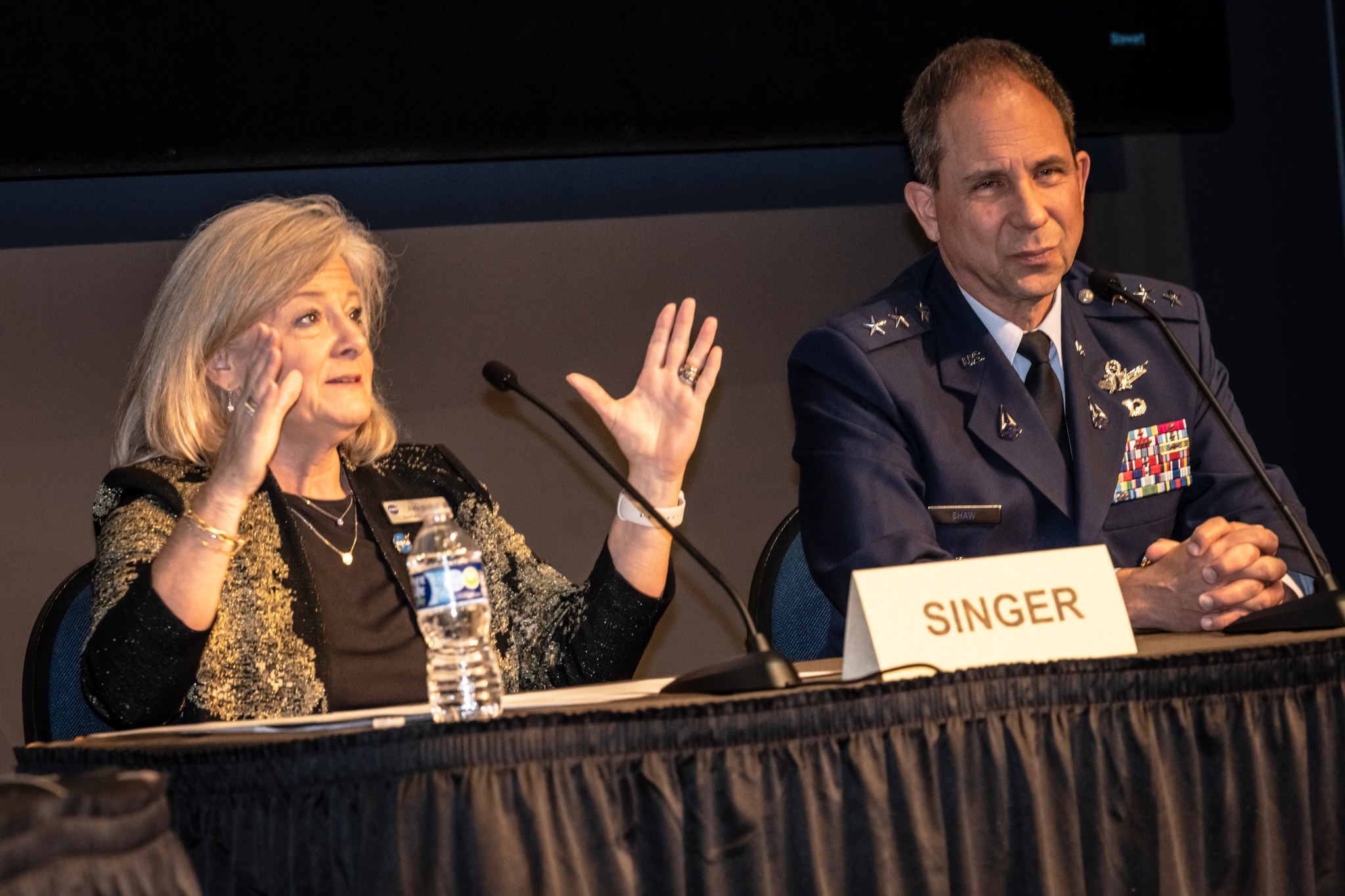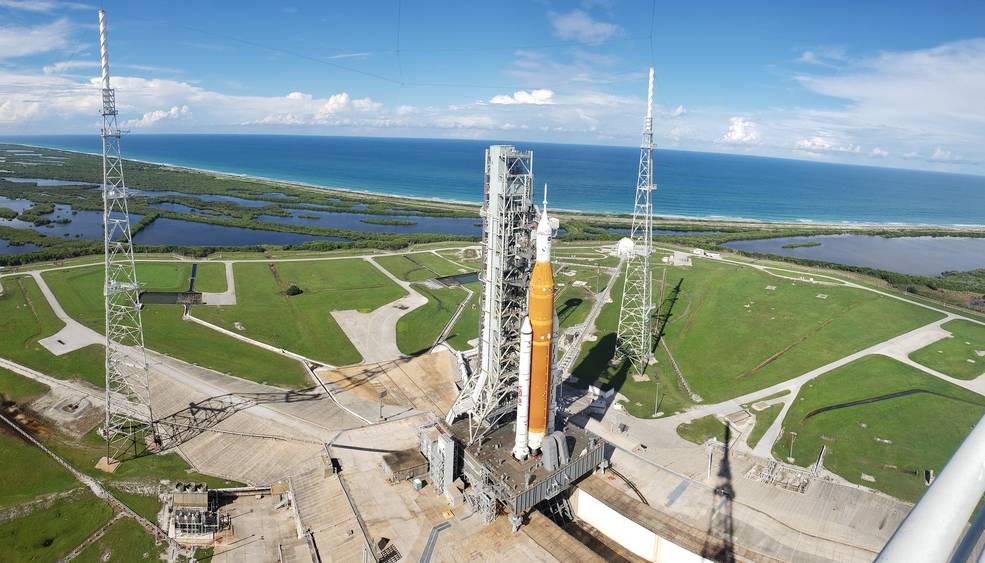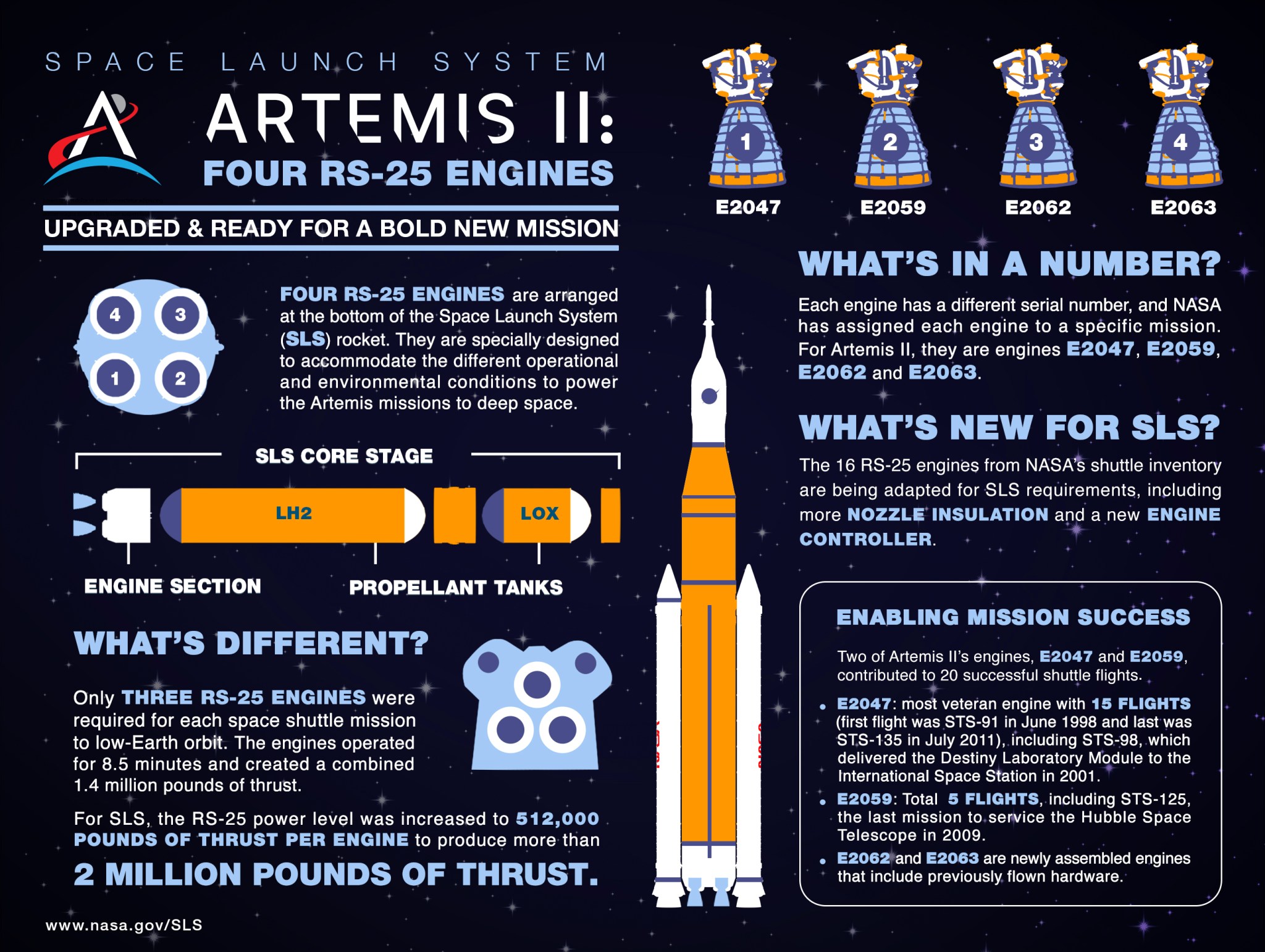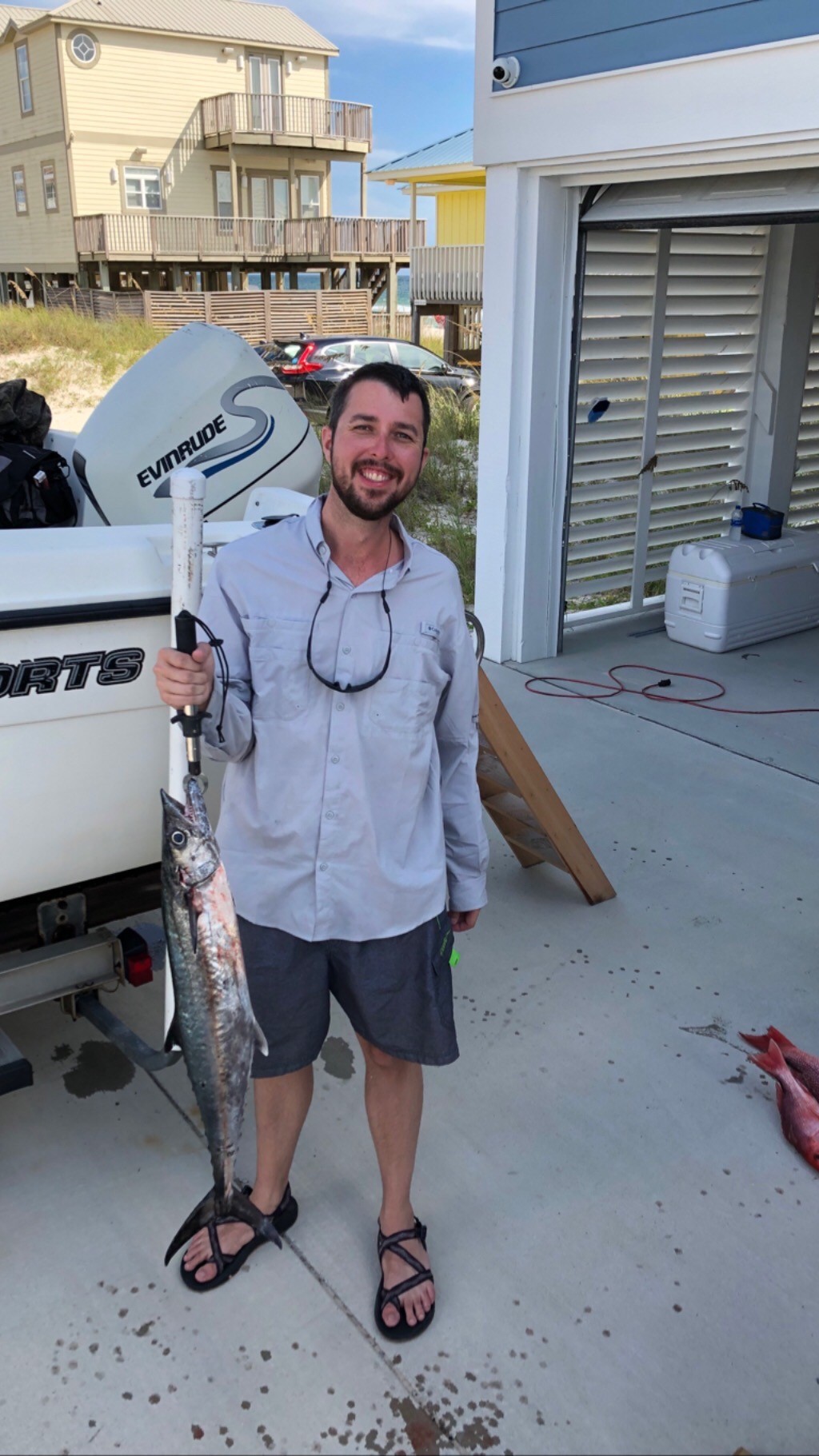In This Week’s Star
- Marshall Documents Implosion of Building 4200, Historic Administrative Facility
- NASA Leaders Look to Bright Future at Von Braun Symposium
- Marshall’s Payload Mission Operations Team Wins Neil Armstrong Space Flight Achievement Award
- Marshall Holds Hispanic Heritage Month Food Truck Fiesta
- Teams on Track for Artemis I Rollout to Launch Pad
- Space Launch System Engines: Launching Artemis Astronauts to the Moon
- Research Scientist Jordan Bell Works Hard to Help Others
- NASA Earth Scientists Gettin’ Down on the Farm
- InSight’s Detection of Impact on Mars Highlighted on ‘This Week at NASA’
Marshall Documents Implosion of Building 4200, Historic Administrative Facility
Building 4200, the administrative headquarters for NASA’s Marshall Space Flight Center for nearly six decades, collapses in a controlled implosion shortly after 7:30 a.m. on Oct. 29. “We are so proud of the work we accomplished in this building,” said Marshall Director Jody Singer. “Yet Marshall’s true legacy isn’t a glass and stone edifice, but the men and women who work within, the vanguard of future space frontier expansion for untold decades to come.” The demolition of the 10-story structure was overseen by Target Contractors of Ladson, South Carolina, which will work to clear the site by the end of the year. Read more about Building 4200 here. (NASA)
NASA Leaders Look to Bright Future at Von Braun Symposium
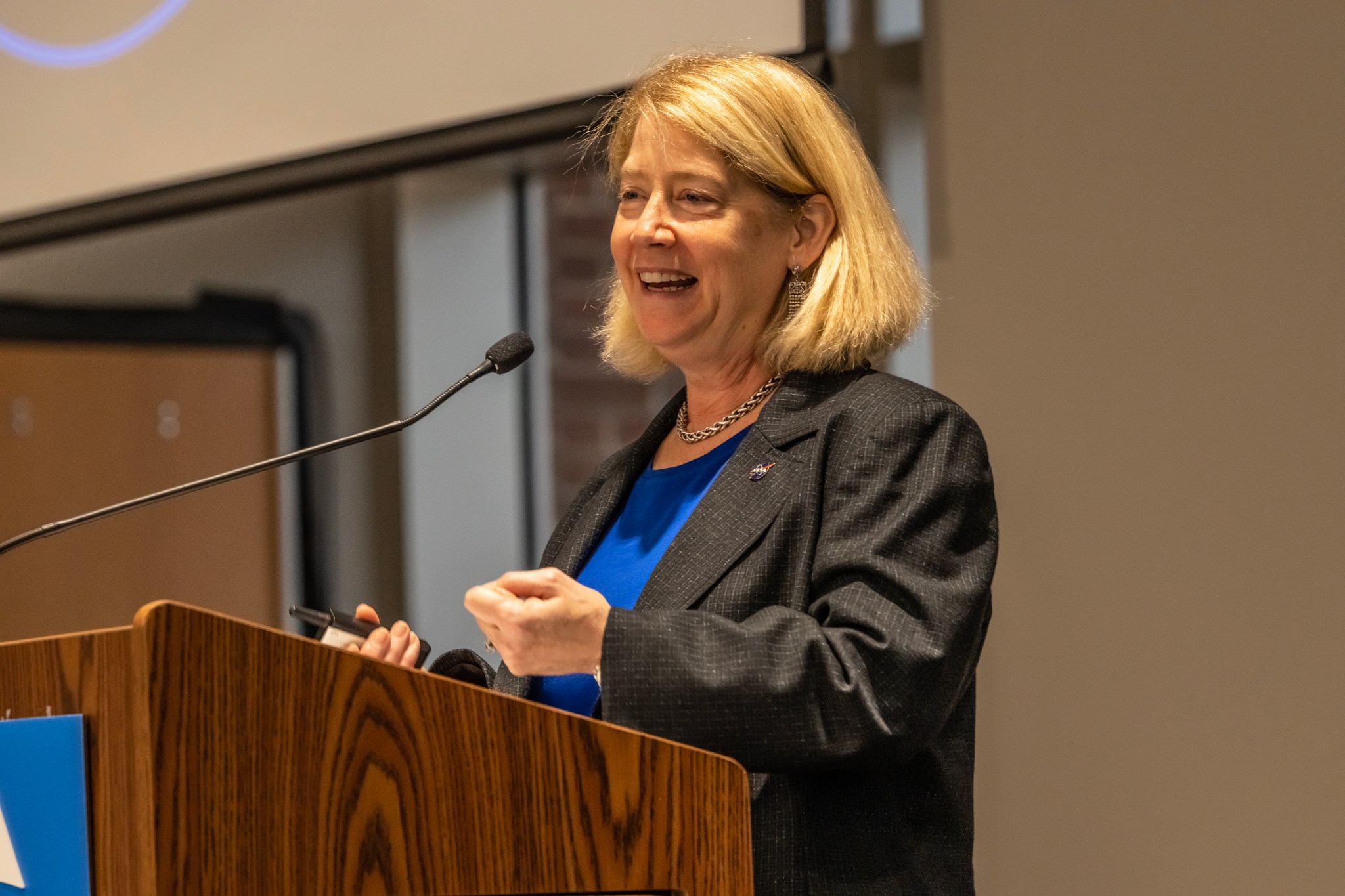
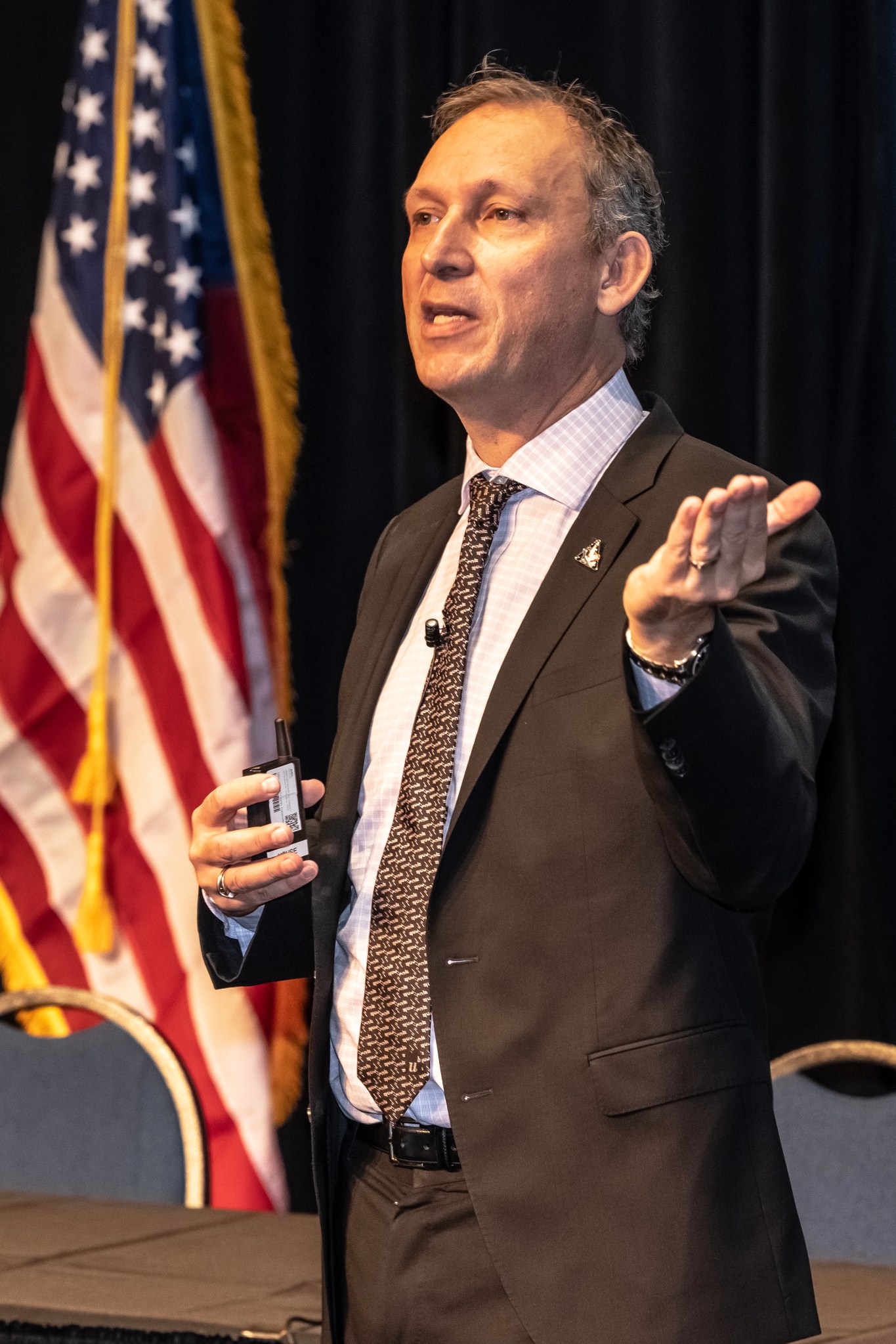
By Hannah Maginot
From deep space exploration to growing the aerospace workforce, NASA executives and other industry experts discussed a wide range of topics at the 15th Wernher von Braun Memorial Symposium.
A creative team effort was the central message of the annual event, which was held Oct. 26-28 at the University of Alabama in Huntsville. The American Astronautical Society hosted the three-day conference, which was also available virtually.
“I am so incredibly proud of our team at Marshall Space Flight Center. Capabilities and needs are changing, and Marshall has changed and will continue to evolve,” Marshall Director Jody Singer said in her opening remarks on Oct. 26. “We truly are a 21st century space transportation center, with expertise in design, development, testing, and operations.”
The theme for the symposium was “Space at the Table: Collaboration, Cooperation, and Inclusion.” Singer said the title was fitting as NASA embarks on the next generation of deep space exploration through the Artemis program and the Space Launch System.
“For me, this year’s theme is the perfect opportunity for us to celebrate teamwork, going all the way back to the team that built the Saturn V,” Singer said. “It was a team of scientists and engineers that made the Apollo missions possible.”
During a leadership panel, Singer remarked on Marshall’s strong position in the space community from its home in northern Alabama, surrounded by commercial, academic, and government partners.
Thomas Zurbuchen, associate administrator for NASA’s Science Mission Directorate, presented the opening address. Zurbuchen highlighted the need to expand the methods used to conduct science in space, calling for a more strategic integration of human and robotic experimentation.
“There is a major shift happening at the interface of science and human exploration,” Zurbuchen said. “For us to take advantage of that, we need to learn new tricks, and we need to do it in a way that creates an inflow of talent and a bringing together of minds. I think this is one of the most exciting things for us to figure out in the next 10 years.”
NASA Deputy Administrator Pam Melroy presented the luncheon keynote address. Melroy highlighted work underway to expand on the Moon to Mars strategy to develop a blueprint for human exploration throughout the solar system.
“It’s a new era of exploration, and I’m pretty confident that the first person to set foot on Mars is in a classroom today – that classroom could be right here in Alabama,” she said.
Melroy also emphasized the growing strength and diversity of the nation’s space economy, thanks to NASA’s contributions outlined in the economic impact report released Oct. 27.
“Marshall’s and Huntsville’s place in the Moon to Mars Program is solid, strong, and we’re going to see a lot of very exciting things happening here in the future,” Melroy said.
During a mission status panel on Oct. 27, Space Launch System Program Manager John Honeycutt provided updates on Artemis I, including reviewing successful testing in preparation for the Nov. 14 launch.
“This rocket’s going to be a game changer for our country,” Honeycutt said. “As far as it’s place in history, I think it will end up being an iconic launch vehicle.”
Marshall Deputy Center Director Joseph Pelfrey led a panel discussion on the future of Artemis, highlighting the infrastructure, transportation, and policy in development to support longer-term missions.
“Marshall’s excited to be leading and supporting in a number of those elements,” Pelfrey said. “We’re also working alongside our commercial partners and international partners, helping them in supporting not only NASA’s goals but their own goals.”
Other session topics included policy and regulation, commercial space destinations, developments in space nuclear propulsion and sustainable lunar presence, and landing system risk reduction. Panels were moderated by NASA center and program leaders, and Elizabeth Barrios, structural materials engineer at Marshall, gave the keynote presentation the evening of Oct. 26 at the Werhner von Braun Memorial Dinner, hosted by the National Space Club Huntsville at the Von Braun Center.
“All of us working for NASA should be proud to work at the top-ranked place to work in federal government for 10 years in a row,” Singer said. “We have a bright future – we are looking forward to the Moon and have our eyes on Mars.”
Maginot, a Media Fusion employee, supports Marshall’s Office of Strategic Analysis & Communications.
Marshall’s Payload Mission Operations Team Wins Neil Armstrong Space Flight Achievement Award
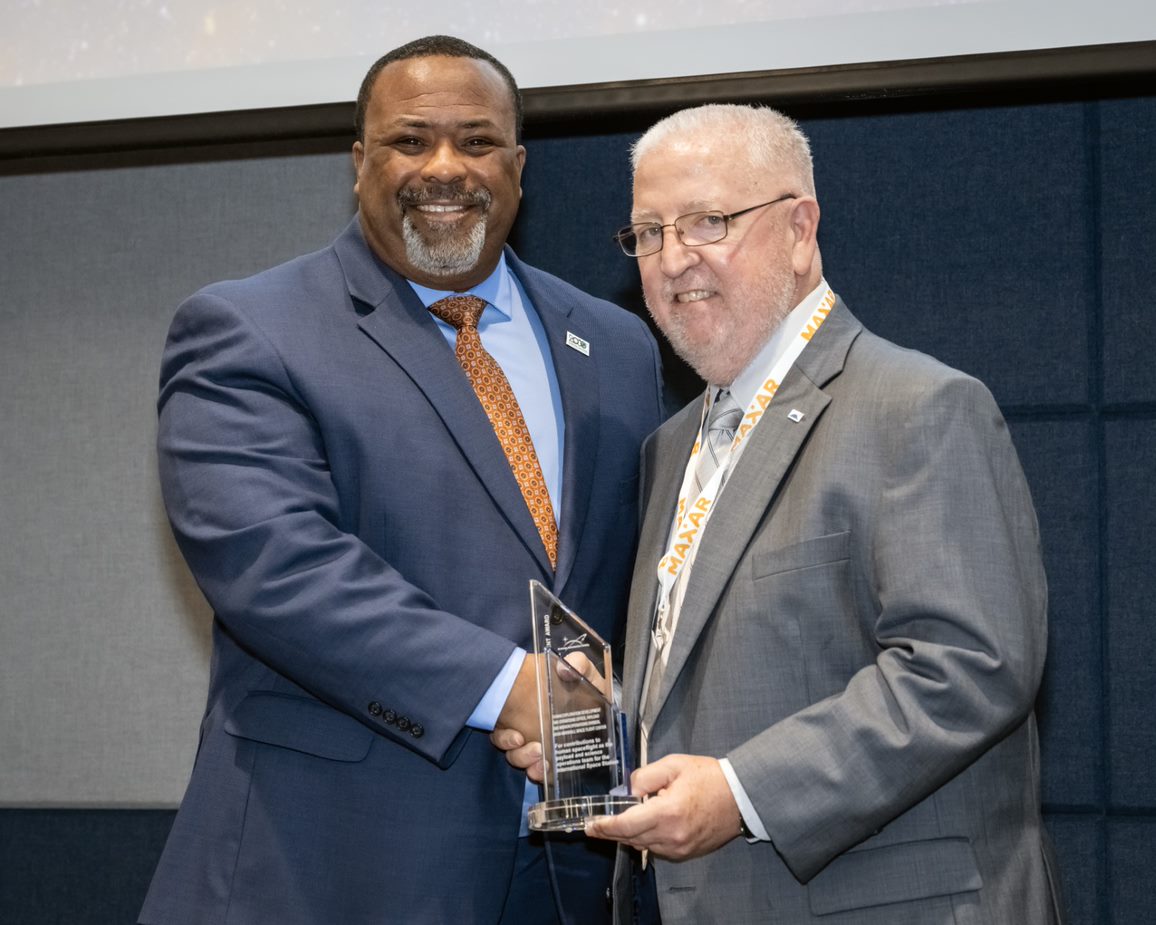
Dwight Mosby, left, manager of the Payload Mission Operations Division in Marshall’s Human Exploration Development and Operations Office, accepts the Neil Armstrong Space Flight Achievement Award on behalf of the PMOD team from American Astronomical Society Executive Vice President Alan DeLuna, right, during the AAS luncheon held Oct. 26 as part of the Wernher von Braun Symposium in Huntsville.
The team was recognized for its contributions to human spaceflight as the payload and science operations team for the International Space Station. Marshall’s PMOD has been responsible for the integrated science operations onboard the space station for more than 20 years, helping to benefit all humankind and the advancement of human exploration missions. Also, during the luncheon, Nicola Fox, director of NASA’s Heliophysics Division, was presented with the Carl Sagan Memorial Award for her demonstrated leadership in the field of heliophysics with extensive project, program, and supervisory experience. (NASA/Mick Speer)
Marshall Holds Hispanic Heritage Month Food Truck Fiesta

Attendees at Marshall Space Flight Center’s Hispanic Heritage Month Food Truck Fiesta dance as they enjoy music at the Oct. 26 event at the Food Truck Corral. The fiesta, co-sponsored by the Hispanic Heritage Special Emphasis Program and Employee Resource Group, featured Hispanic community leaders, a live band, and multiple cultural food trucks. (NASA/Alex Russell)
Teams on Track for Artemis I Rollout to Launch Pad
Teams are on track to roll the integrated Space Launch System rocket and Orion spacecraft for the Artemis I mission from the Vehicle Assembly Building (VAB) to Launch Pad 39B at NASA’s Kennedy Space Center no earlier than Nov. 4 with first motion targeted for 12:01 a.m. EDT/Nov. 3 at 11:01 p.m. CDT.
Ahead of rollout activities, NASA will host a media teleconference at 12 p.m. EDT Thursday, Nov. 3, to discuss the status of the Artemis I flight test. Audio of the call will livestream on the agency’s website at: https://nasa.gov/live
Minor repairs identified through detailed inspections are mostly completed. Preparations are underway to ready the mobile launcher and VAB for rollout by configuring the mobile launcher arms and umbilicals and continuing to retract the access platforms surrounding SLS and Orion as work is completed.
Testing of the reaction control system on the twin solid rocket boosters, as well as the installation of the flight batteries, is complete and those components are ready for flight. Engineers also have replaced the batteries on the interim cryogenic propulsion stage (ICPS), which was powered up for a series of tests to ensure the stage is functioning properly. Teams successfully completed final confidence checks for the ICPS, launch vehicle stage adapter, and the core stage forward skirt.
Teams are continuing to work in the intertank area of the core stage and upper section of the boosters to replace batteries. These areas will remain open to support remaining battery and flight termination system activities. Flight termination system testing has begun on the intertank and booster, and, once complete, those elements will be ready for launch. Charging of the secondary payloads in the Orion stage adapter is complete.
Teams recharged, replaced, and reinstalled several of the radiation instruments and the crew seat accelerometer inside Orion ahead of the crew module closure for roll. Technicians will refresh the specimens for the space biology payload at the launch pad. The crew module and launch abort system hatches are closed for the roll to the pad, and engineers will perform final closeouts at the pad prior to launch.
Teams are moving the crawler transporter into position outside of the VAB ahead of rolling into the facility. The agency continues to target a launch date no earlier than Nov. 14 at 12:07 a.m. EST/Nov. 13 at 11:07 p.m. CST.
Space Launch System Engines: Launching Artemis Astronauts to the Moon
Four RS-25 engines produce more than 2 million pounds of thrust during ascent to help send Artemis II astronauts beyond Earth’s orbit on their journey around the Moon. Artemis II is the second flight of NASA’s Space Launch System (SLS), the world’s most powerful rocket, and the first crewed Artemis mission.
To help power NASA’s next-generation lunar missions, the RS-25 engines have been upgraded for SLS. Two of the four engines have previously flown on a combined 20 space shuttle flights. The third and fourth engines in the flight set are new engines that include previously flown hardware. The two new RS-25 engines completed acceptance testing at NASA’s Stennis Space Center. Image Credit: NASA/Kevin O’Brien
Research Scientist Jordan Bell Works Hard to Help Others
(This is the seventh in a series of profiles on early career scientists in the Earth Science Branch at NASA’s Marshall Space Flight Center.)
By Dauna Coulter
“I knew in fourth grade that I wanted to work in a career related to weather,” says 32-year-old Jordan Bell. “We had a unit on the weather, and that did it.”
As a research scientist at NASA’s Marshall Space Flight Center and coordinator at Marshall for NASA’s Applied Sciences Disasters Program, Bell specializes in building connections between the Disasters Program and organizations like the Federal Emergency Management Agency and the U.S. Department of Agriculture.
His research interests include using satellite remote sensing imagery to evaluate surface damage caused by severe thunderstorms. This involves mapping and analyzing the damage caused by hail across agricultural areas around the world and doing the same for tornado damage tracks across the United States.
“We’re building a first of its kind 20-year record of hail damage swaths across agricultural areas for portions of the United States,” Bell said. “This kind of information is critical for verifying farmers’ claims of crop damage and ensuring that they’re compensated. Also, this record may help unlock the mystery of why some thunderstorms produce hail damage swaths and others don’t.”
Some of his other research includes using remote sensing data for rapid mapping of flooding during disaster response.
“In 2017, when the three major hurricanes Harvey, Irma, and Maria hit, my colleagues and I worked probably 70-plus days straight supporting our partners and stakeholders,” he said.
Marshall, with principal investigators at other NASA centers and additional partners coordinated response. This included participating in interagency calls 24/7 and providing support to end users via NASA-derived information in response and recovery efforts.
Bell and his wife, a nurse, share a love for dogs and own two boxers, both rescues.
Asked to describe himself in a word, Bell said “focused.” In fact, he’s working on becoming less focused.
“I need to learn to take more breaks, use more annual leave, and be more spontaneous and less serious,” he says. “The work emails will still be there when I get back.”
When he does take time off work, he enjoys fishing.
He believes others would describe him as loyal and trustworthy. And that’s not hard to believe. You can’t talk with him without recognizing sincerity and integrity.
“My parents set a good example for me and taught me work ethic,” Bell said.
Bell earned a bachelor’s degree in atmospheric science at the University of Missouri in Columbia, and a master’s degree in atmospheric science at the University of Alabama in Huntsville. After spending four years as a research associate with the Earth System Science Center at UAH, he joined the Marshall’s Earth Science Branch in November 2019.
“I’m glad to be here,” Bell said. “I have a wonderful job where I can make a difference.”
Coulter, a Media Fusion employee, supports Marshall’s Office of Strategic Analysis & Communications.
NASA Earth Scientists Gettin’ Down on the Farm
By Dauna Coulter
It’s not easy being green. Ask any farmer about the green things they grow and they’ll tell you their crops are at the mercy of weather, water availability, and the decisions farmers themselves make. With constant choices about when and where to plant, when to water, when to fertilize, and so much more, it’s not easy being a farmer, either.
NASA’s Earth Observation System provides information to make life easier for green things and farmers, and thus for all of us who depend on them for food. To harvest specifics about information farmers need, Christopher Hain, a research scientist at NASA’s Marshall Space Flight Center, has been “gettin’ down on the farm” with the agency’s Earth Science Director Karen St. Germain, Agriculture Program Lead Brad Doorn, and other experts.
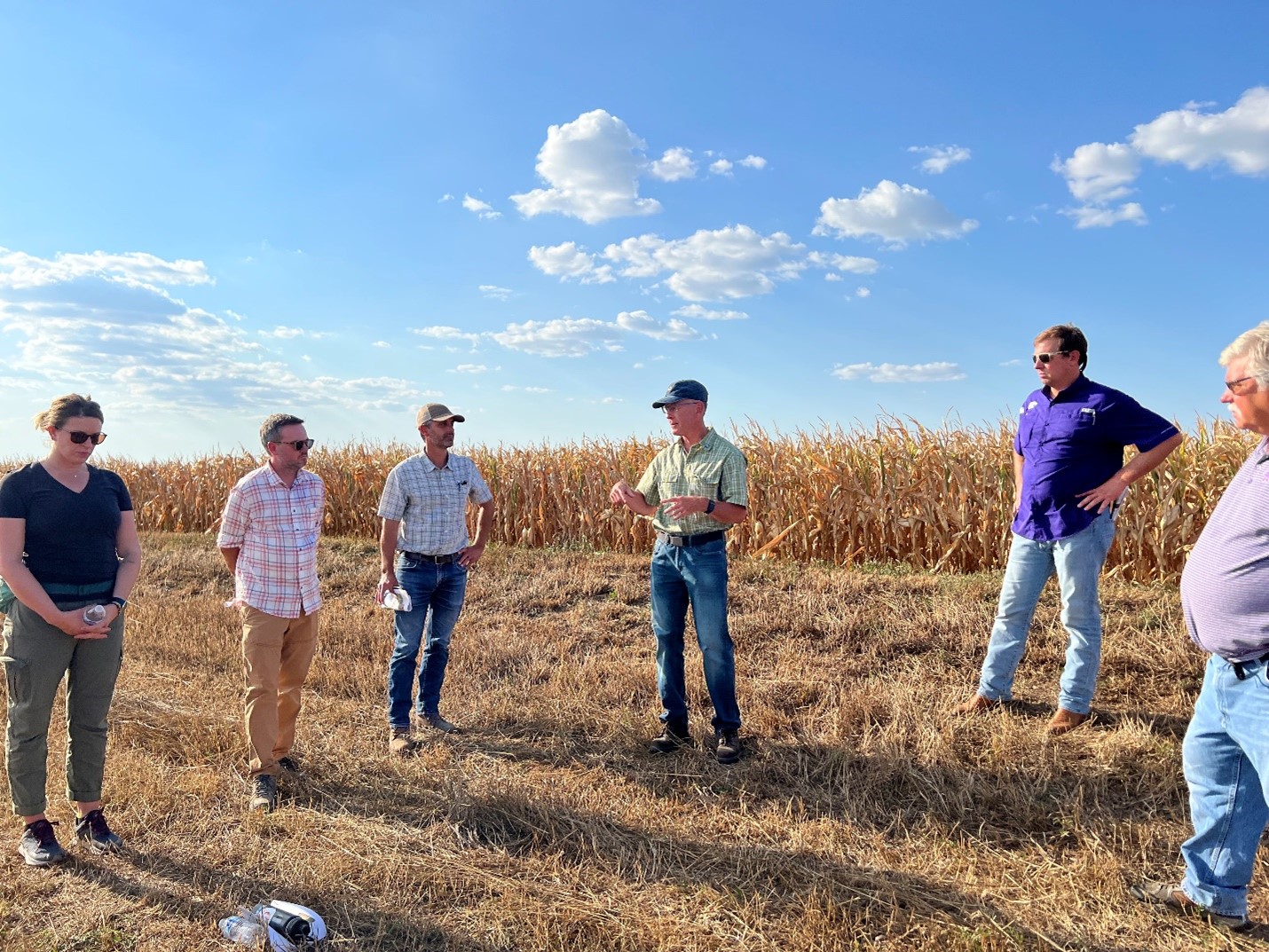
The NASA contingent took a Space for Ag Roadshow and Listening Tour through Nebraska and Kansas, visiting farms and, of course, listening to farmers. The tour included visiting the home of farming YouTube sensation Farmer Derek. To view the entire video and hear the original song Farmer Derek wrote about the trip, visit his YouTube channel.
“They were great hosts, eager to talk to us,” Hain said. “A major theme that came through was how important better short-term weather forecasts are for farmers. They need accurate weather information to make the best decisions about caring for their crops.”
Hain heads up NASA’s SPoRT, or Short-term Prediction Research and Transition, project. As the name implies, SPoRT focuses on improving short-term forecasts. Perfect fit.
Weather forecasting is inherently difficult because it’s affected by so many interdependent variables, for example the warming of Earth’s surface by the sun, the effects of air pressure on winds, and the effects of water changing phases.
“To improve weather forecasts, we need to improve how the land is represented in forecast models,” Hain said. “The land surface in the central U.S. is intimately connected to the atmosphere. If you don’t get the land surface right, you won’t get the forecast model to predict things like temperature and precipitation correctly. SPoRT is using NASA satellite data to provide accurate depictions of variables like soil moisture and evapotranspiration, which can affect temperature and precipitation.”
Evapotranspiration (ET) is the evaporation of water from the soil plus transpiration, or release of water vapor, from the leaves of vegetation into the atmosphere. It’s referred to in the weather world as a “flux.” Because soil moisture and related fluxes are important for better weather forecasting, the SPoRT Land Information System has started producing forecasts of these and other variables out to 14 days. This will help farmers get a better idea of how things like soil moisture could evolve. For example, if they know there’s a high chance of significant rainfall they may choose not to irrigate or fertilize their fields.
To enhance accuracy, Hain and his team will use an ensemble-based prediction system, meaning several forecasts will be used to provide a probability of an event such as a flash drought occurring.
“The more ensembles the better, in theory,” he explains. “We’ll run the model 80 times with 80 different atmospheres to generate 80, 14-day forecasts, and then determine the probability that a variable like soil moisture will exceed a given threshold or change by a certain percentage.”
Not only is ET important to weather forecasts, but it’s also important to farmers. ET is a critical measure of how much water needs to be replaced through irrigation or precipitation to ensure appropriately watered, hearty crops with good yields. It’s key to water management decision-making and has, in the past, been hard to attain.
Hain is on the science team for a tool called OpenET, which makes real-time evapotranspiration data for the western U.S. widely accessible via an online platform. Farmers can use it to map water use even at the field scale. They can go online and view the evapotranspiration numbers to track stress and distribute the water accordingly throughout the season.
Hain and the SPoRT team also co-developed, with the U.S. Department of Agriculture, the Evaporative Stress Index, a satellite-based drought monitoring tool that looks at anomalies in evapotranspiration to assess the direct stress crops are under. Produced over the U.S. at a 4-km scale and globally at a 5-km scale, it captures early signals of flash drought brought on by long periods of hot, dry, windy conditions that swiftly deplete soil moisture. To farmers, this is critical information.
When Hain came in from the fields, he was asked whether he’d rather be a farmer or a research scientist.
“I’m a scientist at heart,” he answered. “I really appreciate how difficult it is to be a farmer. I think the best way I can help them is to sit at my computer and design solutions to the problems they face out in the fields every day.”
Coulter, a Media Fusion employee, supports Marshall’s Office of Strategic Analysis & Communications.
InSight’s Detection of Impact on Mars Highlighted on ‘This Week at NASA’
The detection of a stunning meteoroid impact on Mars by NASA’s InSight lander is featured in “This Week @NASA,” a weekly video program broadcast on NASA-TV and posted online.
The episode also highlights the 15th Wernher von Braun Symposium, held Oct. 26-28 in Huntsville.
The strong marsquake recorded by InSight on Dec. 24, 2021, was caused by a massive meteoroid strike that excavated boulder-size chunks of ice from the Martian surface. Evidence of this is seen in before-and-after images of the impact site from NASA’s Mars Reconnaissance Orbiter.
NASA’s Jet Propulsion Laboratory manages InSight and the Mars Reconnaissance Orbiter for the agency’s Science Mission Directorate. InSight is part of NASA’s Discovery Program, managed by the agency’s Marshall Space Flight Center.
View this and previous episodes at “This Week @NASA” on NASA’s YouTube page.


























